Suggested Healthy Serving Sizes for People with Diabetes These serving sizes are here to help you determine simple, healthy portion sizes in general. These serving sizes are not intended to be used for all of the recipes in this cookbook. Appetizer dips: 1-2 Tbsp. Beans and legumes, cooked: cup Beverages: 1 cup Desserts: cup, pie Fruit: cup Frozen desserts: cup Grains and pasta side dishes: cup Main-dish sauces (for pasta, etc.): cup Meat, poultry and seafood, cooked: 3-4 ounces, about the size of a deck of cards One-dish meals (meat, poultry, seafood, meatless), cooked: 1-1 cups Salad dressings, barbecue sauce: 2 Tbsp. Salads: cup fruit, grain, or bean salads; 1 to 2 cups lettuce salads Sauces: 2 Tbsp. Soup: -1 cup (as a side dish or appetizer); 1-1 cups (as a main dish) Vegetables, cooked: cup
Copyright 2014 by Phyllis Pellman Good All rights reserved.
No part of this book may be reproduced in any manner without the express written consent of the publisher, except in the case of brief excerpts in critical reviews or articles. All inquiries should be addressed to Good Books, 307 West 36th Street, 11th Floor, New York, NY 10018. Good Books books may be purchased in bulk at special discounts for sales promotion, corporate gifts, fund-raising, or educational purposes. Special editions can also be created to specifications. For details, contact the Special Sales Department, Good Books, 307 West 36th Street, 11th Floor, New York, NY 10018 or info@skyhorsepublishing.com. Good Books in an imprint of Skyhorse Publishing, Inc., a Delaware corporation.
Visit our website at www.goodbooks.com. 10 9 8 7 6 5 4 3 2 1 Library of Congress Cataloging-in-Publication Data is available on file. Cover illustration and illustrations throughout the book by Cheryl Benner Design by Cliff Snyder Print ISBN: 9781-561487905 (paperback edition) 9781-561487899 (hardcover gift edition)
9781-561487912 (comb-bound paperback edition)
Ebook ISBN: 978-1-68099-017-1 Printed in the United States of America Publisher's Cataloging-in-Publication Data Good, Phyllis Pellman Fix it and enjoy it! Church suppers diabetic cookbook : 500 great stove-top and oven recipes for everyone! / by Phyllis Pellman Good ; with the American Diabetes Association. p. cm. 1. 1.
Diabetes --Diet therapy --Recipes. 2. Cookbooks. I. Fix it and enjoy it! Church suppers diabetic cookbook : five hundred great stove-top and oven recipes for everyone! II. III. Title. Title.
RC662 .G66 2013
| 641.5/6314 --dc23 | 2013933620 |
Table of Contents _____________________________ _____________________________ Yes, a Church Suppers Cookbook for Anyone with Diabetes! When our kids were in college, they perfected a scouting system to discover which churches were having a carry-in meal each Sunday. Then they and their friends would systematically, and apparently without shame, show up at the church serving food that day, join the line in the fellowship hall, and enjoy the taste of home-plus. Church suppers are an American institution. Some are held once a month or once a season. Others happen weekly over the dinner hour and during the week. Some go on at noon on Sundays, right after church.
In certain communities, everyone contributes food to a specified menu. Elsewhere, each person or household who comes brings a dish of their choice for the buffet. But if you have diabetes, you likely stand back and watch others filling their platesor join in guiltily.  Phyllis Pellman Good The recipes in this book are for anyone whos concerned about their calorie and carbohydrate intake. But we especially wanted to make it possible for persons with diabetes to enjoy a church supper. So take these dishes to your churchs next fellowship mealor to any potluck.
Phyllis Pellman Good The recipes in this book are for anyone whos concerned about their calorie and carbohydrate intake. But we especially wanted to make it possible for persons with diabetes to enjoy a church supper. So take these dishes to your churchs next fellowship mealor to any potluck.
Or create a church supper or potluck menu from the recipes in this collection. And dont forget to prepare and eat these dishes at homewhenever you want to! Managing Diabetes Day-to-Day The American Diabetes Association joined us in this Cookbook , using their know-how to adapt the recipes and analyze them so they fit into nutritional meal plans. Each recipe is accompanied by Exchange Lists/Food Choices and its Basic Nutritional Values. Persons with diabetes need this information so they can manage their calories and their carb, fat, and sodium counts. When eating, youll want to flip often to , Learning Portion Control, until youve learned to recognize appropriate food amounts at a glance. How We Calculated the Recipes Nutritional Analyses The nutritional analysis for each recipe includes all ingredients except those labeled optional, those listed as to taste, or those calling for a dash.
If an ingredient is listed with a second choice, the first choice was used in the analysis. If a range is given for the amount of an ingredient, the first number was used. Foods listed as serve with at the end of a recipe, or accompanying foods listed without an amount, were not included in the recipes analysis. In recipes calling for cooked rice, pasta, or other grains, the analysis is based on the starch being prepared without added salt or fat, unless indicated otherwise in the recipe. The analyses were done assuming that meats were trimmed of all visible fat, and that skin was removed from poultry. (Fold an index card, or another rectangle of stiff paper, in half so that it will stand up straight.) Write on the cardSafe to eat if you have diabetes! And give the Exchange List Values for the dish on the sign, too. (Fold an index card, or another rectangle of stiff paper, in half so that it will stand up straight.) Write on the cardSafe to eat if you have diabetes! And give the Exchange List Values for the dish on the sign, too.
Then welcome everyone to the table!  Tips for Healthier, Happier Eating How to Plan Healthy Meals Healthy meal planning is an important part of diabetes care. If you have diabetes, you should have a meal plan specifying what, when, and how much you should eat. Work with a registered dietitian to create a meal plan that is right for you. A typical meal plan covers your meals and snacks and includes a variety of foods. Here are some popular meal-planning tools: An exchange list is a list of foods that are grouped together because they share similar carbohydrate, protein, and fat content. Any food on an exchange list may be substituted for any other food on the same list.
Tips for Healthier, Happier Eating How to Plan Healthy Meals Healthy meal planning is an important part of diabetes care. If you have diabetes, you should have a meal plan specifying what, when, and how much you should eat. Work with a registered dietitian to create a meal plan that is right for you. A typical meal plan covers your meals and snacks and includes a variety of foods. Here are some popular meal-planning tools: An exchange list is a list of foods that are grouped together because they share similar carbohydrate, protein, and fat content. Any food on an exchange list may be substituted for any other food on the same list.
A meal plan that uses exchange lists will tell you the number of exchanges (or food choices) you can eat at each meal or snack. You then choose the foods that add up to those exchanges. Carbohydrate counting is useful because carbohydrates are the main nutrient in food that affects blood glucose. When you count carbohydrates, you simply count up the carbohydrates in the foods you eat, which helps you manage your blood glucose levels. To find the carbohydrate content of a food, check the Nutrition Facts label on foods or ask your dietitian for help. Carbohydrate counting is especially helpful for people with diabetes who take insulin to help manage their blood glucose.
The Create Your Plate method helps people with diabetes put together meals with evenly distributed carbohydrate content and correct portion sizes. This is one of the easiest meal-planning options because it does not require any special toolsall you need is a plate. Fill half of your plate with nonstarchy vegetables, such as spinach, carrots, cabbage, green beans, or broccoli. Fill one-quarter of the plate with starchy foods, such as rice, pasta, beans, or peas. Fill the final quarter of your plate with meat or a meat substitute, such as cheese with less than 3 grams of fat per ounce, cottage cheese, or egg substitute. For a balanced meal, add a serving of low-fat or nonfat milk and a serving of fruit.


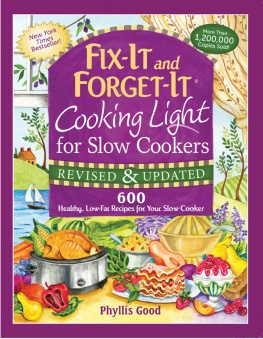
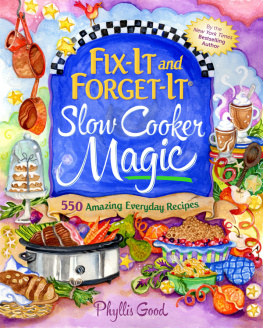



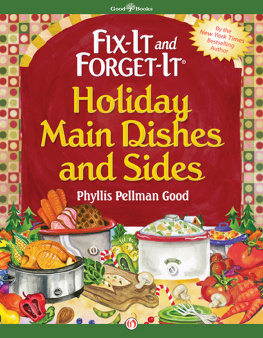
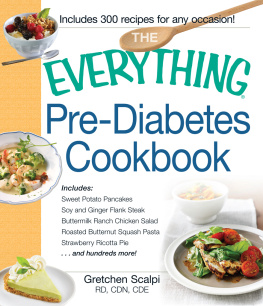





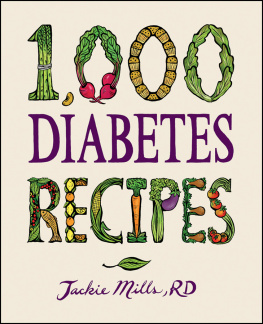

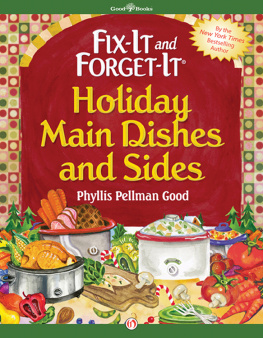


 Phyllis Pellman Good The recipes in this book are for anyone whos concerned about their calorie and carbohydrate intake. But we especially wanted to make it possible for persons with diabetes to enjoy a church supper. So take these dishes to your churchs next fellowship mealor to any potluck.
Phyllis Pellman Good The recipes in this book are for anyone whos concerned about their calorie and carbohydrate intake. But we especially wanted to make it possible for persons with diabetes to enjoy a church supper. So take these dishes to your churchs next fellowship mealor to any potluck. Tips for Healthier, Happier Eating How to Plan Healthy Meals Healthy meal planning is an important part of diabetes care. If you have diabetes, you should have a meal plan specifying what, when, and how much you should eat. Work with a registered dietitian to create a meal plan that is right for you. A typical meal plan covers your meals and snacks and includes a variety of foods. Here are some popular meal-planning tools: An exchange list is a list of foods that are grouped together because they share similar carbohydrate, protein, and fat content. Any food on an exchange list may be substituted for any other food on the same list.
Tips for Healthier, Happier Eating How to Plan Healthy Meals Healthy meal planning is an important part of diabetes care. If you have diabetes, you should have a meal plan specifying what, when, and how much you should eat. Work with a registered dietitian to create a meal plan that is right for you. A typical meal plan covers your meals and snacks and includes a variety of foods. Here are some popular meal-planning tools: An exchange list is a list of foods that are grouped together because they share similar carbohydrate, protein, and fat content. Any food on an exchange list may be substituted for any other food on the same list.